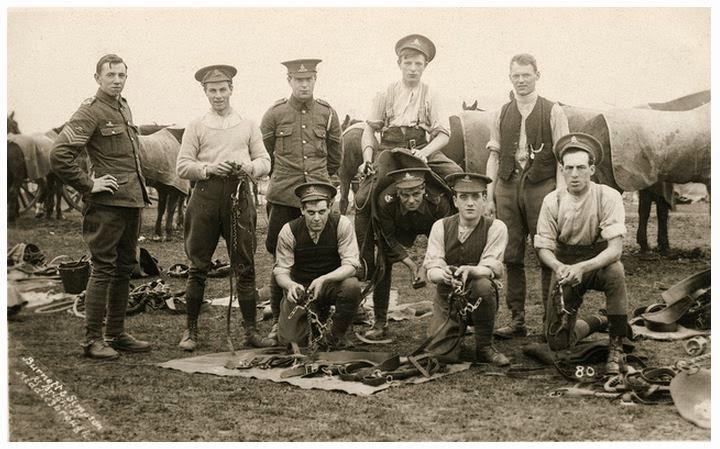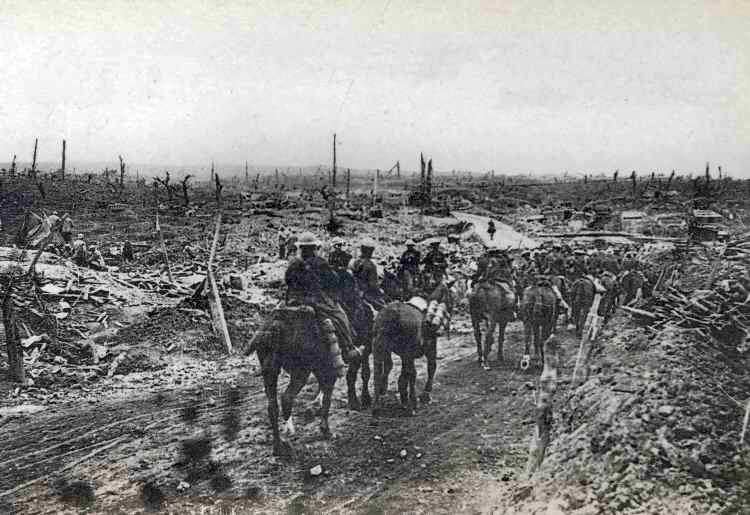William Joseph Blencowe [7108]

1886-1979
Father Nm: 7. William Blencowe [788]^ born Dec Q 1851 Daventry mother Palmer c 1.2.1852 Norton died 1927 Norton: Oldest known ancestor – John Blinco 1660 Whilton
Mother Nm: Anne Sullivan [7106] 1856 Templemore Ireland-1905
Marriage Dt:1911 Mary Merlin
Ireland, Civil Registration Marriages Index, 1845-1958 about William Blencowe, Name: William Blencowe, Date of Registration: Apr-May-Jun 1910, Registration district: Naas, Volume: 2, Page Number: 765
Kin comments: A long line of military history in the family Great Grandfather William 1797-1883 was a veteran of the Battle of Waterloo. Father William was in the 64th Regiment (2nd Staffs) from 1883 until 1889. Brother Ernest G P. served with the Lancers but was discharged sick in 1910 and died that year. Brother John was killed in action in Ypres in 1914. Brother Frederick (Frank) James served with the Lancers.
WW2: Son Charles served in WW2
Spouse comments: Mary Merlin 1888-1972
Children: Charles William 1911, Florence M 1915, Bridgett, Kathleen 1924, Albert Patrick 1931
1886 Birth registered at 64th Regiment Jamaica vol 998 p 66 1886
1891 Census with family in Norton.
- William Blencowe 40 General labourer
- Ann Blencowe 35
- John Blencowe 7
- William J Blencowe 5
- Ernest G Blencowe 3
- Mary F Blencowe 1/12
- Eliza Jones 70
1901 Census Norton Northants
- Blencowe William Head Ag Labourer M 1852 Norton 49
- Blencowe Anne Wife F 1857 Templemore Ire. 44
- Blencowe Frederick Son M 1893 Norton 8
- Blencowe Ernest Son M 1889 Pietermaritzburg SA 12
- Blencowe William Son M 1886 Jamaica 16
1902
- Enlisted Royal Horse Artillery. Woolwich, London
1911 Census living with Father in Law at 6 Patrick St. Newbridge Kildare
- Blencowe William Patrick Street Newbridge Urban Kildare 26 M
- Blencowe Mary Patrick Street Newbridge Urban Kildare 22 F
- Blencowe Charles W Patrick Street Newbridge Urban Kildare 0 M
- William a soldier Gunner with the Royal Horse Artillery stationed at the Newbridge Barracks in either D or E Battery.
 |
|
| Royal Horse Artillery |
Pre-war
Enlisted in the RHA in 1902 age 16. so could have enlisted anytime between 1906 to 1911. As we have seen William was with either ‘D’ or ‘E’ batteries in 1911 at Newbridge. Here is what happened up to the beginning of the RHA going to the front.
Originally ‘D’, ‘E’ Battery (both based at Newbridge) and J (Aldershot) Batteries RHA. William left the Regiment in 1911 as a reservist.
WW1
Blencowe William, Gunner, 37201, 14th Brigade, Royal Horse Artillery.
1914
- William was called up from the RHA Reserves when war was declared.
- The single piece of evidence of William’s Brigade is the Medal card which shows he landed on 5th Oct. 1914 in France and that his medals were awarded to him as with the 14th (XIV) Brigade of the RHA. While the medals were awarded at the end of the war that does not in itself confirm his first Brigade in the war. However the 14th (XIV) Brigade did land on 5th Oct.
- In addition, it would seem William moved from a ‘D” or ‘E’ to ‘C’ battery prior to Sept. 1914 as these batteries went overseas at this time.
- In summary, then it appears William was with the 14th (XIV) Brigade RHA throughout the war and that he was with ‘C’ or ‘F’ Battery.
- 14th (XIV) Brigade was part of the 7th Divisional Artillery until Jan 1917. The 14th (XIV) Brigade comprised of ‘C’ and ‘F’ Batteries on landing in Oct. 1914.
XIV Brigade RHA

Notes on 14th (XIV) Brigade RHA changes: Originally C and F Batteries RHA. Under 7th Division Sept 1914 to Feb 1917, when became an Army Brigade RHA. C moved to 3rd Cavalry Division, joining XV Bde in Oct 1914. T Battery joined from Egypt in Dec 1914. D/XIV joined from Corps in June 1915. A section from each of 31 and 35 Howitzer Batteries joined May 16 and re-designated D Batt. 509 (H) joined Oct 1916, but broke up Feb 1917. B/CLXIX and a section of C/CLXIX joined Feb 1917, re-designated C/XIV. F and T Batteries were re-armed with 18-pounder guns in June 1915.
- 5th/6th Oct. Embarked overseas and landed in Zeebrugge. XIV Brigade joined the 7th Division at Lyndhurst on formation. With 7th Division, it crossed to Belgium on 4th and 5th October 1914 (landing at Zeebrugge on 6th October)
- 19th Oct. – 22nd Nov. The First Battle of Ypres. The Division fought the advancing German army to a standstill at “Wipers” as the British soldiers called it. All units suffered grievous losses, and it was not until the following January/February that it was once more in a complete enough condition to be considered at full fighting strength. After First Ypres, it was often known as the “Immortal Seventh”. ‘C’ Battery lost two men and ‘F’ Battery 10 men in this period.3
1915
- 10th-13th Mar. The Battle of Neuve Chapelle. The British attackers broke through German defences in a salient at the village of Neuve-Chapelle but the success could not be exploited. 7th Division played a minor role in this battle
- 9th May. The Battle of Aubers. While the 7th Division may have been involved in this battle the RHA has no casualties
- 15th – 25th May. The Battle of Festubert.
- 15th – 16th Jun. The Second Action of Givenchy.
- 25th Sept. – 18th Oct. The Battle of Loos. The largest battle of WW1 in 1915 and ultimately a very heavy defeat for the British. Featuring sixteen Blencowe men that we can identify. General Haig mistakenly thought this would be a great victory (even one to end the war) but without the planning, adequate Artillery fire, and specific target maps of advancement. Haig thought the first use of the gas by the British would devastate the Germans but it did not. The British had 60,000 casualties compared to the Germans 26,000 which in itself tells of the outcome. The BEF commander Gen. Sir John French lost his command as a result of the failure of the battle and Haig inherited the role from then on.

The length and intensity of the Artillery Barrage were criticised after the battle. Even though 110 heavy guns, 84 guns, and howitzers were used. The Division took part in the initial assault north of the Vermelles-Hulluch road, facing the Quarries and a series of strong points. Suffering badly from British cloud gas – which was not moved sufficiently by the gentle breeze – and badly cut up by German machine gun fire and artillery, the Division nonetheless seized the Quarries and only failed to penetrate the third German line due to the relative weakness of the numbers of men that got through. The Divisional Commander, Major-General Thompson Capper, died of wounds received during this action.
1916
- 1st– 13th Jul. The Battle of the Somme* in which the Division captured Mametz

The Mametz Fricourt area front lines as the attack is begun. The 7th Div 91st Bde on the front line of attack - 14th – 17th Jul. 20th – 25th Jul. The Battle of Bazentin. The attacks on High Wood* The 7th Division, the first formation to enter High Wood;
- 15th July – 3rd Sept. The Battle of Delville Wood*
- 2nd – 7th Sept. The Battle of Guillemont*

The site of Guillemont village during the War. Photo: Vise Paris The 14th Brigade sustained casualties of 6 men killed in this period, on the last day of this battle losing 3 men.
The battles marked * are phases of the Battles of the Somme 1916
- 13th – 18th Nov. Operations on the Ancre
1917
- Jan . The 14th Brigade left the 7th Divisional Artillery and became part of the Third Army Troops a confusing term which means they were attached as Artillery to the HQ of the Third Army on the Western Front.
- 9th – 14th Apr. First Battle of the Scarpe. The 14th Brigade sustained heavy casualties on the last day of this battle losing 4 men on this day.3
Note: For a time it appears William’s battalion was behind the lines but not necessarily safe. Extract from ‘The Battery: A Story of 150 Years of T Battery (Shah Sujah’s Troop) Royal Artillery. 1838-1988.’, “…On 8 June 1917, the 14th Brigade, RHA …transferred to the area of Ghyvelde… Enemy shelling was very active and prolonged and in order to reduce casualties personnel were withdrawn from the gun position from time to time. Aircraft from both sides were also very active, with enemy aircraft coming in to attack from the sea. …on 11 August ten men in the Battery were killed.”
1918
- 21st 22nd Aug. The Battle of Albert. The Third Army (Incl.14th Brigade) was in the battle for Albert. The British Third Army and the United States II Corps launched the attack to recapture Albert on the 21st of August. The town of Albert was retaken on the 22nd and the town of Bapaume was captured on the 29th of August.
William seems to have served the entire war and likely returned home in 1919.
After The War
1921 Census
Living with Father in Norton.
William Blencowe Head 1851 69 Northamptonshire, England Garden Labourer Lasy & B Thynne Estate Owner
William Blencowe 1886 35 Jamaica Farm Labourer Richard Mason Farmer
Mary Blencowe Daughter-in-law 1889 32 Newbridge, Kildare, Ireland Home Duties –
Charles Blencowe Grandson 1911 10 Newbridge, Kildare, Ireland – –
Florence Blencowe Granddaughter 1914 7 Northamptonshire, England
1939 Census
33-34 Norton, Norton, Daventry., Northamptonshire
William J Blencowe 05 May 1886 Male Electric Truck Driver Married
Mary Blencowe 14 Dec 1888 Female Unpaid Domestic Duties Married
Albert P Blencowe 16 Mar 1931 Male At School Single
Died 1979, Age 92
Daventry, Northamptonshire Volume: 7 Page: 2573.
Sources
- Photos and clipping and some research kindly provided by Tim Kirby Military Researcher and descendant David Blencowe, Norton.
- Wikipedia
- The Long, Long Trail The British Army in the Great War, 1914-1918.
- CWGC database at ww.hut-six.co.uk
Medals

William was awarded the British, 1914 ‘Mons’ Star and Victory medals. Entitled to request the clasp and rosette for the 1914 medal but no record of this.
Obituary February 1979
This article in the Daventry Newspaper tells the potted history of William’s Life and gives key dates for his military service beginnings
GALLERY





